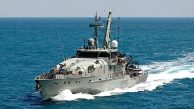
Australia’s Military Involvement in the Vietnam War
ED: An article from my inbox from US member – Thanks Dave Coates
Stars & Stripes
Australia’s military involvement in the Vietnam War marked a significant chapter in the nation’s history. Around 60,000 Australian military personnel served in Vietnam during the course of the war, with a maximum of 7,700 combat troops deployed at any one time. The war had a profound impact on Australian society, politics, and its international relationships, particularly with the United States.
Prior to World War II, Australia’s foreign policy was closely aligned with Britain. However, during and after the war, Australia began to seek stronger defence ties with the United States. This shift was driven by growing concerns over security in the Asia-Pacific region and the perceived threat of communist expansion. By the 1950s, Australia had established closer ties with the US through agreements such as the ANZUS Treaty (1951), which formalized a security pact between Australia, New Zealand, and the United States. Additionally, Australia joined the Southeast Asia Treaty Organization (SEATO) and provided financial aid and support to South Vietnam as part of its commitment to containing communism.
Australia’s involvement in Vietnam began in 1962, when the Menzies government sent a contingent of military trainers to assist the South Vietnamese army. By 1964, the government introduced conscription to increase the size of its defence force, a decision that proved controversial within Australian society. The first Australian combat troops were deployed to Vietnam in 1965, marking the start of Australia’s direct military engagement in the conflict.
In 1966, Australian forces were given responsibility for Phuoc Tuy province, located about 50 miles east of Saigon. They established a major base and airstrip at Nui Dat and worked to secure the surrounding area from Viet Cong forces. Unlike their American counterparts, Australian military tactics were more cautious and measured. They operated in smaller units, typically platoons, and employed counter-insurgency tactics that focused on gaining the support of the local population while avoiding major roads, paths, and obvious ambush points. This approach made Australian troops more effective and respected by the enemy, though some American commanders criticized the Australians for not clearing areas as quickly as desired.
One of the most notable engagements involving Australian forces was the Battle of Long Tan in August 1966. A force of 108 Australian soldiers from Delta Company, 6th Battalion, Royal Australian Regiment (6RAR), successfully defended their position against a much larger Viet Cong force, demonstrating the effectiveness of their tactics.
The Vietnam War took a heavy toll on Australian forces. A total of 521 Australian servicemen were killed in action, and more than 3,000 were wounded. Many veterans suffered long-term physical and psychological effects from their service, leading to ongoing debates about the war’s impact on individuals and the nation.
The Vietnam War coincided with a period of significant social and political change in Australia. The Cold War era was marked by fears of communist infiltration in unions, political parties, and society at large. These fears influenced government policy and public sentiment. However, as the war dragged on, public opposition to Australia’s involvement grew. Anti-war protests became more frequent and widespread, particularly among students, unions, and religious groups.
Conscription was one of the most contentious issues of the time. The introduction of compulsory military service led to significant public outcry, with many Australians viewing it as an unjust policy. The anti-conscription movement gained momentum throughout the late 1960s and early 1970s, further fuelling opposition to the war.
Australia began withdrawing its troops from Vietnam in 1971. The Australian government, under Prime Minister John Gorton, initiated the withdrawal process in 1970, reflecting growing public discontent and changing political priorities. By late 1972, most Australian combat troops had been withdrawn, with the remaining personnel primarily involved in support and advisory roles. The final phase of the withdrawal was completed by December 1972, when the Australian government officially declared the end of its combat role in Vietnam.
The complete withdrawal of Australian forces was finalized by 30 June 1973, marking the end of the nation’s military involvement in Vietnam. The war had a lasting impact on Australia’s foreign policy and military strategy, with subsequent governments adopting a more cautious approach to overseas military engagements.
The legacy of the Vietnam War remains a subject of reflection and debate in Australia. Many veterans struggled to reintegrate into society upon their return, facing indifference or hostility from a public divided over the war’s justification. It was not until the 1980s that the contributions of Vietnam veterans were formally recognized, culminating in the establishment of the Australian Vietnam Forces National Memorial in Canberra in 1992.
The Vietnam War also reshaped Australia’s defence policies and its relationship with the United States. The conflict underscored the importance of regional security and the need for Australia to maintain a capable and independent defence force. It also highlighted the challenges and consequences of military intervention in foreign conflicts, lessons that continue to influence Australian defence strategy today.




